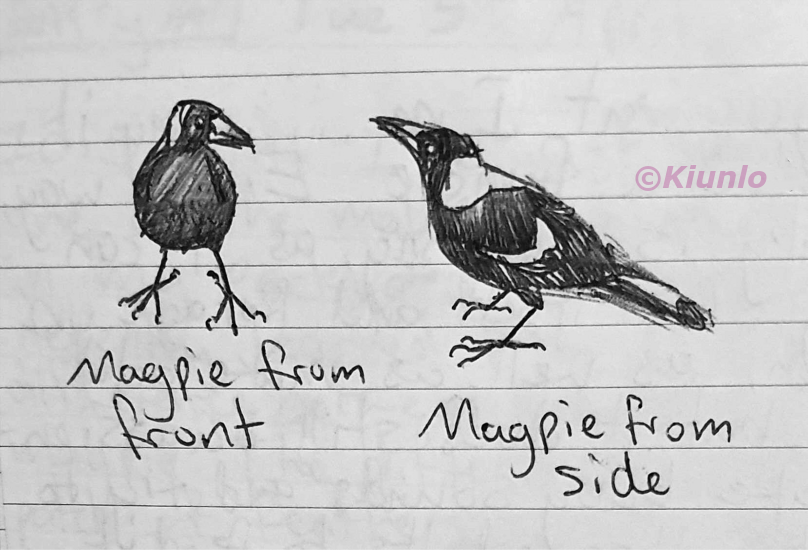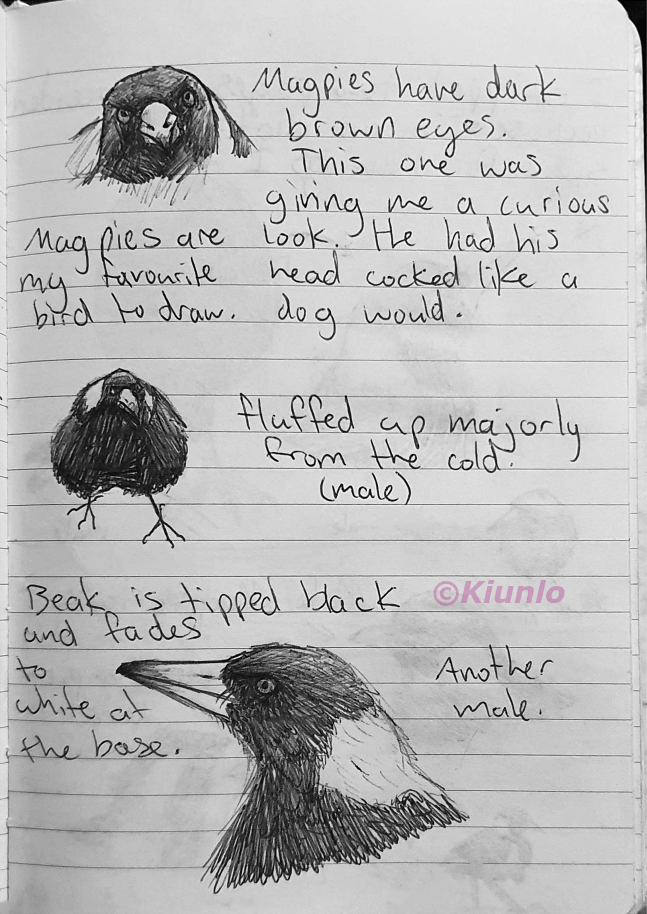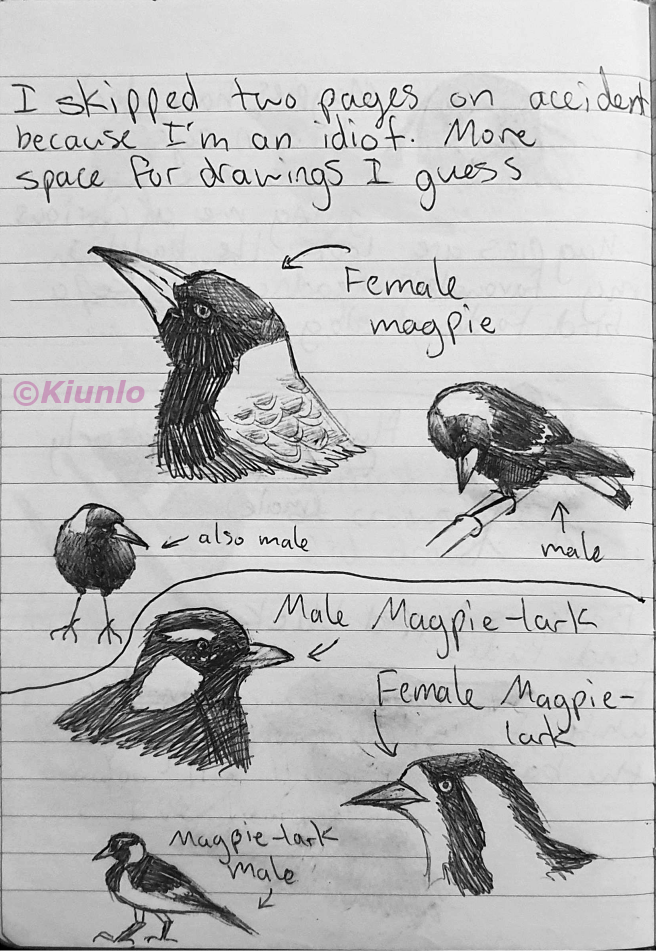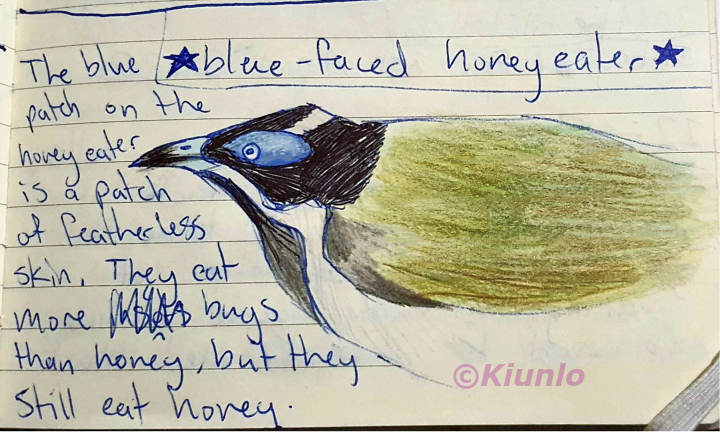Entry 5
Tuesday 5th April 2022
10:57am
I’ve just been watching one of the male Magpies foraging in the backyard for insects. I’ve recently learned how to tell the difference between a male and a female Magpie. The difference is the white patch of feathers on the back of the neck. The males have a complete white patch on their neck, similar to the other white feathers on its body. The females, on the other hand, have some more grey feathers dispersed throughout the white patch of feathers on the back of their neck.
With this information at my disposal, I now know that there are two male Magpies in our area (a father and a son that was born the previous year), and one female, which would be the mother. The males are definitely more bold and less skittish or cautious than the female is. I’m also not sure if their newest baby is male or female yet, as it still has it’s baby plumage, but I’m thinking it could be a female. Either way, the baby is maturing, as it can already feed itself and forage on its own, as well as make adult calls, but it still does occasionally make baby sounds and try to get the other adults to feed it. It still has its dark grey beak, but it will probably turn white in the next few months.
Additional last minute notes - I will probably also sketch the birds I see because I like to draw and I want to draw more birds, especially the ones in my local area. This is a bird book after all! I don’t see why all my entries must only be written text.
Addition from 2:37pm - Just came back from a walk. Saw a small flock of Crested Pigeons, a few Magpie-Larks, and I heard a lone King Parrot in the distance.

Image description: Pen drawings of two Magpies. The Magpie on the left is facing forward, and the the Magpie on the right is facing towards the other magpie.

Image description: Three pen drawings of Magpies. The first Magpie is looking straight at the viewer, and only its head is visible. The second Magpie is facing foward, and its feathers are fluffed up, making it look very round. The third Magpie is looking to the left, and only its head is visible. Details of the black feathers can be seen. First row of text: "Magpies are my faourite bird to draw. Magpies have dark brown eyes. This one was giving me a curious look. He had his head cocked like a dog would. Second row of text: "Fluffed up majorly from the cold. (male)." Third row of text: "Beak is tipped black and fades to white at the base. Another male."

Image description: Six pen drawings of multple different birds. The first three drawings are of Magpies, with one facing forward while looking to the right, another Magpie perched on a branch while tilting its head at an odd angle, and the third drawing being a headshot of a magpie looking to the left. The last three drawings are of Magpie Larks, with the first two drawings being headshots of a male and female looking in different directions, and the last drawing being of the full body of a male Magpie Lark looking left. Text reads: "I skipped two pages on accident because I'm an idiot. More space for drawings I guess."

Image description: Pen drawing of a Magpie facing forward, lofting one of its feet up. Text reads: "Sometimes one of the Magpies will stand only on one leg. In this drawing you can kind of see it, but most of the time it looks like the Magpie only has one leg."

Image description: Pencil drawing of a Blue-Faced Honeyeater. It had black and white feathers on it's head and face, with the white trailing to the underside of its body. It is olive green back and wing feathers, with a blue patch of colour on the side of the face. Text reads: "The blue patch on the honeyeater is a patch of featherless skin. They eat more bugs than honey, but they still eat honey."
